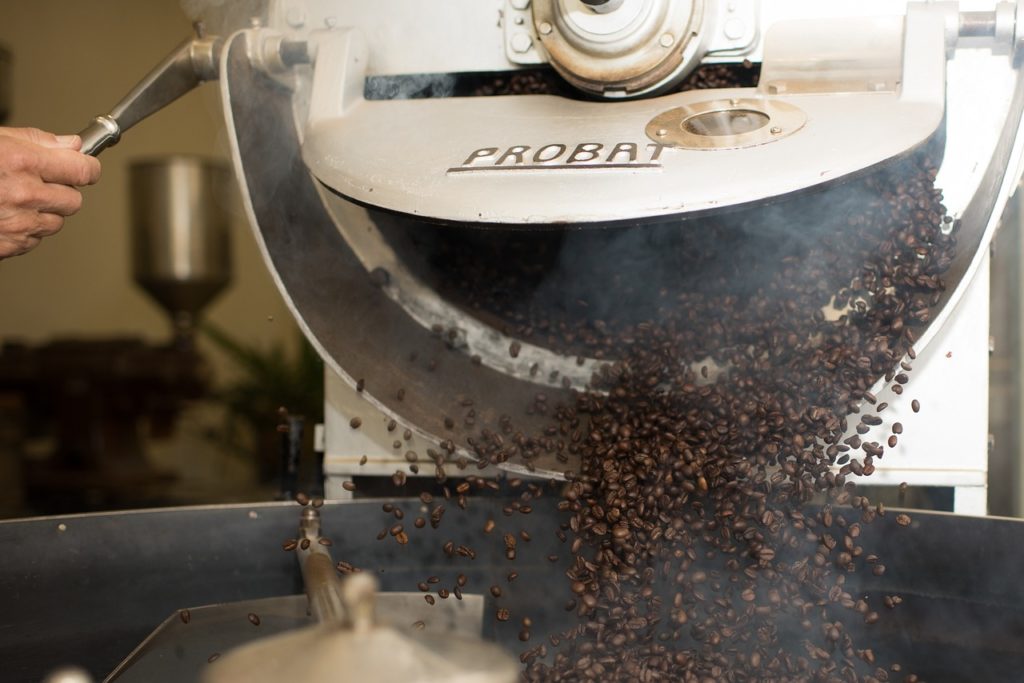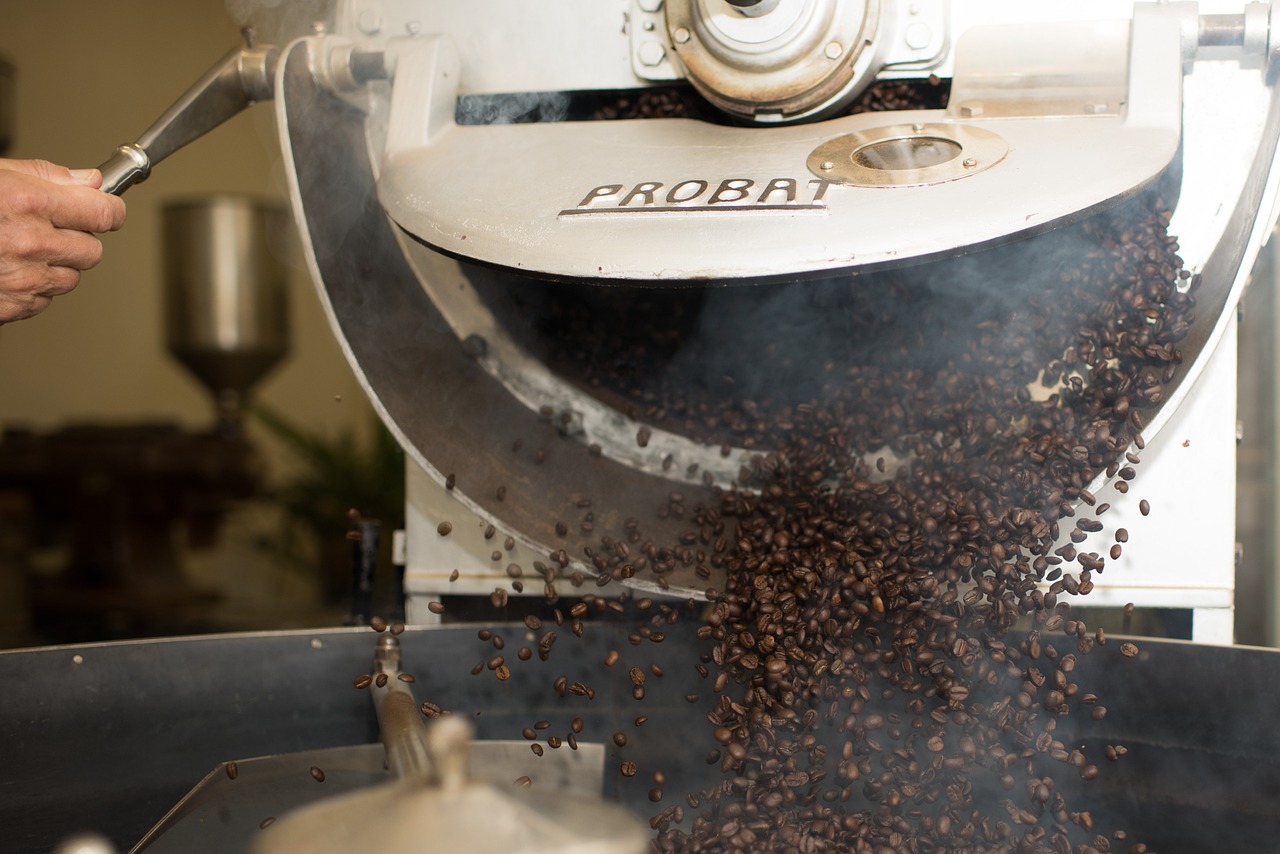
Roasting coffee is an intricate art that significantly impacts the flavour, aroma, and overall quality of the final brew. The coffee roasting process involves carefully controlled heating of green coffee beans to develop their inherent flavours and characteristics. Among the various methods used for roasting, drum roasters and air roasters are two of the most prevalent. Each method has its unique mechanics, advantages, and challenges, making them suitable for different preferences and scales of production. This comprehensive blog will delve into the details of drum and air roasting methods, comparing their processes, benefits, and potential drawbacks to help you understand which might be best suited for your needs.
The Basics of Coffee Roasting
Before diving into the specifics of drum and air roasters, it’s essential to understand the basic principles of coffee roasting. The primary goals of roasting are to:
- Develop Flavour: Roasting transforms the chemical and physical properties of green coffee beans, developing the complex flavours and aromas characteristic of roasted coffee.
- Achieve Desired Roast Level: Coffee can be roasted to varying degrees, from light to dark, depending on the desired flavour profile.
- Ensure Consistency: Consistent roasting ensures that each batch of coffee meets the expected quality and flavour standards.
Drum Coffee Roasting: An In-Depth Look
What is Drum Coffee Roasting?
Drum roasting is one of the oldest and most traditional methods of coffee roasting. In this process, coffee beans are placed in a rotating drum that is heated either by gas, wood, or electricity. As the drum rotates, the beans are continuously tumbled, ensuring even exposure to heat.
How Drum Roasting Works
- Preheating: The drum is preheated to the desired temperature before the beans are added.
- Loading: Green coffee beans are loaded into the drum.
- Roasting: The drum rotates, tumbling the beans to ensure even heating. Heat is applied either directly (in direct-fired drum roasters) or indirectly (in hot-air drum roasters).
- Cooling: Once the beans reach the desired roast level, they are quickly cooled to stop the roasting process, typically using air or water.
Advantages of Drum Coffee Roasting
- Even Roasting: The tumbling action of the drum ensures that beans are roasted evenly, reducing the risk of scorching or under-roasting.
- Flavour Development: Drum roasting allows for a more controlled and gradual development of flavours, resulting in a richer and more complex coffee profile.
- Capacity: Drum roasters can handle larger batches of coffee, making them suitable for commercial operations.
Disadvantages of Drum Coffee Roasting
- Energy Intensive: Drum roasters can be energy-intensive, especially when preheating the drum and maintaining the desired temperature.
- Heat Transfer: In direct-fired drum roasters, the beans are in direct contact with the heat source, which can sometimes lead to uneven roasting if not carefully monitored.
- Cooling Time: Cooling the beans after roasting can be slower compared to air roasting methods, potentially affecting the final flavour.
Air Coffee Roasting: An In-Depth Look
What is Air Roasting?
Air roasting, also known as fluid bed roasting, is a more modern method of coffee roasting. In this process, coffee beans are roasted using a stream of hot air that suspends and circulates the beans, providing even heating without direct contact with a hot surface.
How Air Roasting Works
- Preheating: The air roaster is preheated to the desired temperature.
- Loading: Green coffee beans are loaded into the roasting chamber.
- Roasting: A stream of hot air is blown through the chamber, suspending and circulating the beans. The hot air roasts the beans evenly as they float in the airstream.
- Cooling: Once the beans reach the desired roast level, the hot air is turned off, and the beans are quickly cooled using a stream of cool air.
Advantages of Air Coffee Roasting
- Even Heating: Air roasting ensures that beans are heated evenly from all sides, reducing the risk of uneven roasting.
- Speed: The roasting process in an air roaster is typically faster than in a drum roaster, allowing for quicker turnaround times.
- Consistency: Air roasting provides a high level of consistency from batch to batch, making it easier to replicate desired roast profiles.
- Energy Efficiency: Air roasters can be more energy-efficient, as they do not require the same level of preheating and maintenance as drum roasters.
Disadvantages of Air Coffee Roasting
- Flavor Development: Some coffee enthusiasts argue that the rapid roasting process in air roasters can result in a less complex flavor profile compared to drum roasting.
- Capacity: Air roasters generally have smaller batch capacities, making them less suitable for large-scale commercial operations.
- Cost: High-quality air roasters can be expensive, potentially limiting accessibility for smaller roasters or home enthusiasts.
Comparing Drum Roasters and Air Roasters
Flavour Profiles
- Drum Roasters: Tend to produce a richer, more complex flavour profile due to the slower and more controlled roasting process. The even tumbling of the beans allows for gradual development of flavours.
- Air Roasters: Often result in a cleaner, brighter flavour profile. The rapid roasting process preserves the beans’ inherent flavours but may lack some of the depth and complexity achieved with drum roasting.
Roasting Time
- Drum Roasters: Typically have longer roasting times, ranging from 12 to 20 minutes, allowing for more nuanced flavour development.
- Air Roasters: Roast times are generally shorter, often between 6 to 12 minutes, resulting in quicker production cycles.
Consistency and Control
- Drum Roasters: Provide excellent control over the roasting process, with the ability to make fine adjustments to temperature and drum speed. However, maintaining consistency across batches can be challenging without precise monitoring.
- Air Roasters: Offer high levels of consistency due to the uniform heating provided by the hot air stream. The process is less dependent on manual adjustments, making it easier to replicate desired roast profiles.
Batch Size and Scalability
- Drum Roasters: Suitable for larger batch sizes and commercial operations. They can handle significant quantities of coffee, making them ideal for large-scale production.
- Air Roasters: Typically have smaller batch capacities, making them more suitable for small-scale operations or home roasting. However, commercial-scale air roasters are available for those needing higher output.
Energy Efficiency
- Drum Roasters: Generally require more energy for preheating and maintaining the desired roasting temperature, making them less energy-efficient than air roasters.
- Air Roasters: Tend to be more energy-efficient due to their quicker roasting times and lower preheating requirements. They also often feature advanced temperature control systems that optimize energy use.
Practical Considerations for Choosing a Coffee Roaster
Your Coffee Business Size and Needs
- Commercial Scale: If you are operating a large-scale commercial roasting business, a drum roaster may be more suitable due to its larger batch capacity and ability to produce complex flavour profiles.
- Small Scale or Home Roasting: For smaller operations or home roasting enthusiasts, an air roaster may be more practical due to its efficiency, consistency, and ease of use.
Desired Flavour Profiles
- Complex and Rich: If you prioritize a deep, complex flavour profile with nuanced development, a drum roaster may be the better choice.
- Clean and Bright: If you prefer a cleaner, brighter flavour profile that highlights the beans’ inherent characteristics, an air roaster might be more appropriate.
Budget and Investment
- Initial Investment: Consider the initial cost of the roaster, as well as ongoing maintenance and energy expenses. Drum roasters may have higher initial costs but can handle larger volumes.
- Energy Costs: Evaluate the energy efficiency of each type of roaster and how it will impact your operational costs over time.
Space and Installation
- Space Requirements: Drum roasters typically require more space and ventilation due to their size and heat output. Ensure you have adequate space for installation and operation.
- Installation and Setup: Air roasters are often more compact and easier to install, making them suitable for smaller spaces or environments with limited ventilation options.
Choosing the right roasting method is a crucial decision for any coffee roaster, whether you are a commercial producer or a home enthusiast. Drum roasters and air roasters each offer unique advantages and challenges, influencing the final flavour, consistency, and efficiency of your coffee roasting process. By understanding the differences between these methods and considering your specific needs and preferences, you can make an informed decision that enhances your coffee roasting journey. Whether you opt for the traditional, nuanced approach of drum roasting or the efficient, consistent results of air roasting, the ultimate goal remains the same: to create exceptional coffee that delights the senses.



